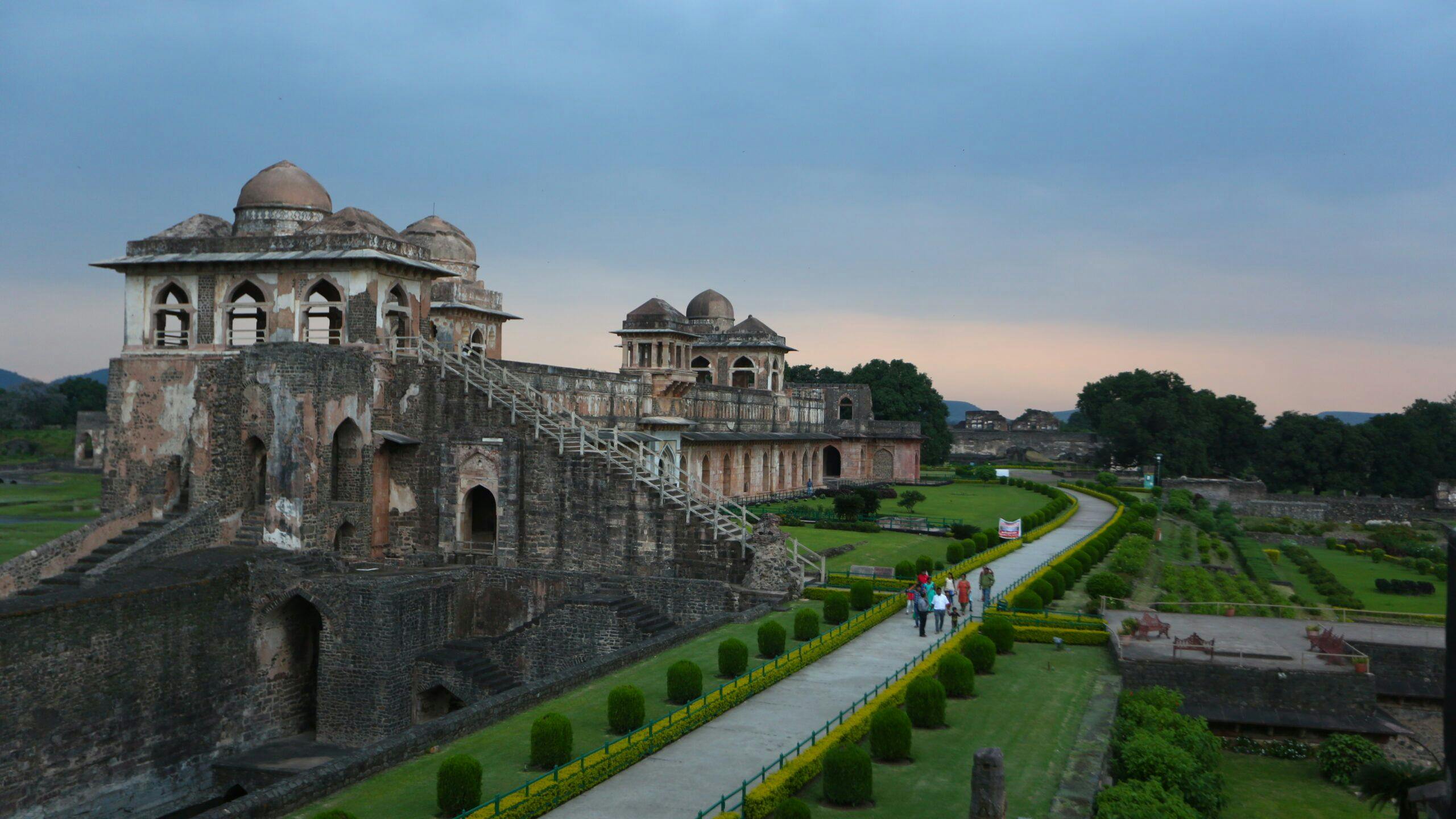Magic of Mandu
BOOKMARK
Around 90 km south of Indore, in Madhya Pradesh, are the ruins of one of the most beautiful cities of medieval India – ‘Shaadiabad’ or the ‘City of Joy’, better known as Mandu. These remains have mesmerized travellers for centuries.
Mughal Emperor Jahangir writes in his memoirs Jahangirnama:
‘What words of mine can describe the beauty of the grass and of the flowers? They clothe each hill and dale, each slope and plain. I know of no place so pleasant in climate and so pretty in scenery as Mandu in the rainy season.’
Located on a high plateau overlooking the Narmada valley, Mandu’s origins are very ancient. Once known as Mandapadurga, epigraphic evidence found here tells us there was a settlement here as early as 550 CE. It was an important town in the Gujjar Pratihara which ruled from the mid-8th to the 11th centuries and then under the Paramaras of Dhar. It is believed that the famous Raja Bhoja of Dhar built a temple to Saraswati here, though only few fragments of Mandu’s early past survive. In 1305, Mandu came under the rule of the Sultanate of Delhi.
Following the sacking of Delhi by the armies of Timur in 1398, the central authority of the Delhi Sultanate collapsed. Dilawar Khan Ghuri, the then governor of Malwa, declared his independence. He shifted the capital of Malwa from Dhar to Mandu, renaming it ‘Shaadiabad’ or ‘City of Joy’. It would remain the seat of the Malwa Sultanate till its capture by the Mughal armies in 1562.
The most famous monument in Mandu is the so-called Roopmati’s pavilion. The story of Roopmati, a Hindu singer, and Baz Bahadur, the last Sultan of the Malwa sultanate, is one of the most popular romances of mediaeval India. According to the story, Baz Bahadur (r. 1555-1562), while on a hunting expedition, encountered a shepherdess of great beauty and melodious voice. He resolved to marry her and make her his queen. She agreed, only on condition that he build a palace for her from where she could look at her beloved Narmada river. Baz Bahadur built a pavilion for her just above his palace.
While the couple lived happily, the beauty of Roopmati spread across India. Adham Khan, a Mughal general, invaded Mandu and sought to capture Roopmati. Baz Bahadur was defeated and forced to flee, while Roopmati consumed poison to save her honour. This ended the independence of Malwa and it became a part of the Mughal empire in 1562 CE.
Interestingly, historians are still divided on whether this tale is fictional or based on true events. The so-called ‘Roopmati’s Pavillion’ is actually a military lookout post, giving a bird’s eye view of the dense forests of the Narmada Valley in the South. Just below the pavillion is the Palace of Baz Bahadur.
The grandest building in Mandu is undoubtedly the Jama Masjid, whose construction was begun by the Malwa Sultanate’s first Sultan, Hoshang Shah, and completed by Mahmud Khilji in 1454 CE. The inscription on the doorway of the main porch claims that it has been modelled on the Grand Mosque of Damascus in Syria. What makes that mosque so spectacular is the sheer number of domes. Of the original 162 domes (4 large and 158 small), 96 (4 large and 92 small) domes survive to this day. These domes were not just decorative, but a part of an acoustic system to ensure that the imam’s voice was heard right across the large mosque.
The most famous among Mandu’s monuments is the ‘Royal Enclave’ comprising palaces, pavilions and tanks, such as Jahaz Mahal, Hindola Mahal and Jal Mahal. Located between two tanks, Munja Talao and Kapur Talao, is a large palace known as Jahaz Mahal or the Ship Palace. It comprises a two-storey palace with fountains and pavilions in it. Adjoining the Jahaz Mahal is the Jal Mahal or Water Palace, surrounded by water; the Champa Baoli, a large stepwell; and the Shahi Hamams or royal baths.
Hindola Mahal or the ‘Swing Palace’ was the Durbar Hall of the Malwa Sultans. It gets its peculiar name from its slanting walls which give it an illusion of being a swing. Interestingly, an exact copy of this palace is found in Warangal in Telangana, around 850 km away! It was possibly constructed by the same architect.
Also within Mandu is the Chappan Mahal, originally a tomb which was converted into a hunting lodge by the Maharajas of Dhar. Today, the mahal houses an archaeological museum.
While these are some of the most popular monuments in Mandu, this medieval city also hides within it a number of other palaces, monuments, caravan sarais and buildings that are still waiting to be discovered. This is what makes Mandu so magical.









